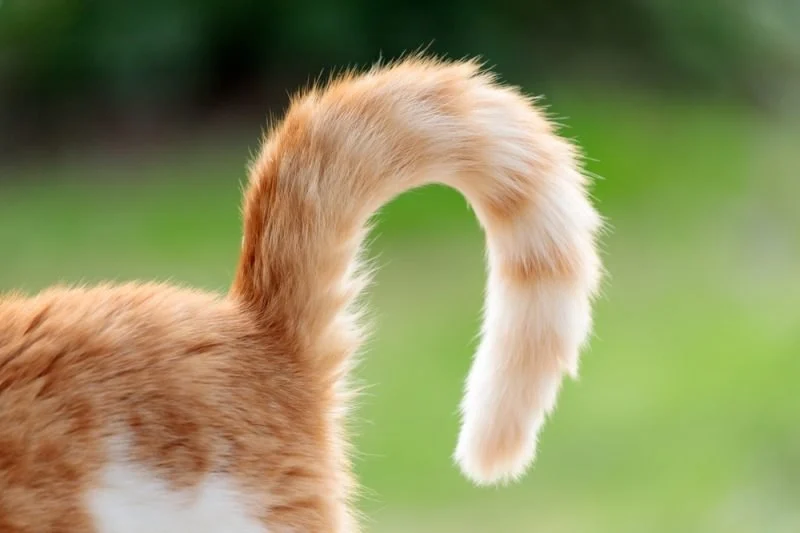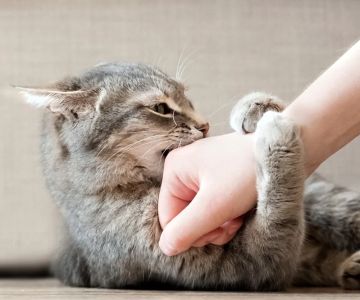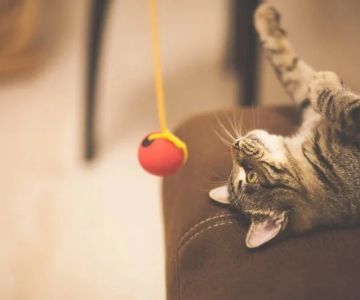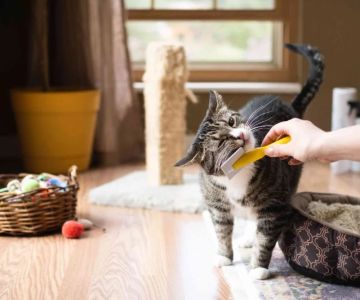
- 1 - Why Tail Injuries Are Concerning for Kittens
- 2 - Identifying Symptoms of a Broken Tail
- 3 - Steps to Help Your Kitten with a Broken Tail
- 4 - Case Study: Kitten Tail Recovery Story
- 5 - Recommendations from Omnia Pet for Kitten Care
1. Why Tail Injuries Are Concerning for Kittens
A kitten’s tail plays a significant role in communication, balance, and overall physical health. Tail injuries, especially fractures or breaks, can be quite painful and may interfere with a kitten’s ability to move, balance, or interact with their environment. Moreover, untreated tail injuries can lead to infections, long-term damage, or even loss of the tail.
Kittens are naturally curious and may experience accidents that result in tail injuries, such as falling from heights or being caught in doors or windows. It's essential to recognize and address a broken tail early to prevent complications and ensure the kitten’s well-being.

Vetco Vaccination Clinic
KillinglyNortheastern Connecticut Planning RegionConnecticut
1086 Killingly Cmns, Dayville, CT 06241, USA
2. Identifying Symptoms of a Broken Tail
Identifying a broken tail in a kitten can be challenging, as they may not show obvious signs of distress. However, there are a few clear symptoms that can indicate a tail injury:

Preventive Veterinary Medicine Clinic
PepperellMiddlesex CountyMassachusetts
23 Maple St, Pepperell, MA 01463, USA
2.1 Visible Deformity or Displacement
One of the most noticeable signs of a broken tail is a visible deformity or displacement of the tail. If the tail appears bent at an odd angle, swollen, or out of place, it may be fractured or dislocated. In such cases, immediate veterinary attention is necessary.
2.2 Sensitivity or Pain
A kitten with a broken tail may exhibit signs of pain when the tail is touched or moved. This can include vocalizing, hissing, or trying to pull away when their tail is touched. The kitten may also show signs of limping or walking awkwardly if the injury affects its mobility.
2.3 Behavioral Changes
Behavioral changes such as increased irritability, hiding, or reluctance to play or move around are common in kittens with a broken tail. They may also avoid using their tail or show a lack of tail movement, which is a sign of discomfort or injury.
2.4 Swelling, Redness, or Bleeding
If the injury is severe, you may notice swelling, redness, or even bleeding near the base or tip of the tail. In some cases, the skin may tear if the injury was caused by a trauma like being slammed in a door.
3. Steps to Help Your Kitten with a Broken Tail
If you suspect your kitten has a broken tail, there are a few steps you can take to manage the injury and ensure a proper recovery:
3.1 Keep the Kitten Calm and Comfortable
The first step is to keep your kitten calm and comfortable. Avoid handling the tail excessively, as this can cause further pain or damage. Create a quiet, safe space for your kitten to rest in, free from distractions and stress.
3.2 Seek Veterinary Care
A broken tail usually requires professional veterinary care. If you notice any of the symptoms mentioned above, schedule an appointment with your veterinarian. The vet will perform a physical examination and may take X-rays to assess the extent of the injury. They will provide treatment options depending on the severity of the break.
3.3 Follow the Veterinarian’s Treatment Plan
Treatment for a kitten with a broken tail can vary. In some cases, the vet may recommend pain relief medications, antibiotics to prevent infection, or even a surgical procedure to repair the tail if necessary. It’s crucial to follow the vet’s instructions carefully, especially regarding medication and post-treatment care.
3.4 Monitor the Recovery Process
Recovery from a tail injury can take time. Monitor your kitten’s progress closely and look for any signs of infection, such as increased redness, swelling, or discharge. Keep your kitten indoors during the healing process to avoid further injury. If the injury was severe, the vet may schedule follow-up visits to ensure proper healing.
4. Case Study: Kitten Tail Recovery Story
A kitten named Bella was brought to our clinic after her tail was accidentally slammed in a door. Her owners noticed her hiding and not moving her tail at all. Upon examination, we confirmed that Bella had a fractured tail. After administering pain relief and performing a gentle X-ray, we devised a treatment plan involving rest and regular monitoring.
After a few weeks of care, Bella made a full recovery and was back to her playful self, with her tail fully healed. Her owners were relieved and learned the importance of early intervention for injuries like these.
5. Recommendations from Omnia Pet for Kitten Care
At Omnia Pet, we understand how important it is to provide the best care for your kitten, especially when they’re dealing with injuries. We offer a wide range of products, including comfortable bedding, recovery aids, and calming items to help your kitten heal. If you're looking for the best products to support your kitten's recovery, visit Omnia Pet today.
Be sure to consult with your veterinarian for specific treatment plans and use trusted products to aid your kitten’s recovery!







 Compassion Veterinary Clinic4.0 (83 reviews)
Compassion Veterinary Clinic4.0 (83 reviews) Riverdale Veterinary Group PC4.0 (860 reviews)
Riverdale Veterinary Group PC4.0 (860 reviews) Dr. John J. Etchart, DVM (Horses only)5.0 (4 reviews)
Dr. John J. Etchart, DVM (Horses only)5.0 (4 reviews) ABC Animal Hospital4.0 (146 reviews)
ABC Animal Hospital4.0 (146 reviews) Vetco Vaccination Clinic3.0 (6 reviews)
Vetco Vaccination Clinic3.0 (6 reviews) Petco4.0 (1082 reviews)
Petco4.0 (1082 reviews) The Truth About Essential Oils and Pets: Which Ones Are Dangerous?
The Truth About Essential Oils and Pets: Which Ones Are Dangerous? Understanding Feline Anemia: Causes, Symptoms, and Treatment
Understanding Feline Anemia: Causes, Symptoms, and Treatment Why Do Kittens Like to Chase Their Tails?
Why Do Kittens Like to Chase Their Tails? Best Ways to Keep a Kitten Cool in Summer – U.S. Guide
Best Ways to Keep a Kitten Cool in Summer – U.S. Guide The Science of a Kitten's Digestive System: How It Works and What You Need to Know
The Science of a Kitten's Digestive System: How It Works and What You Need to Know How to Train Your Kitten to Play Dead
How to Train Your Kitten to Play Dead